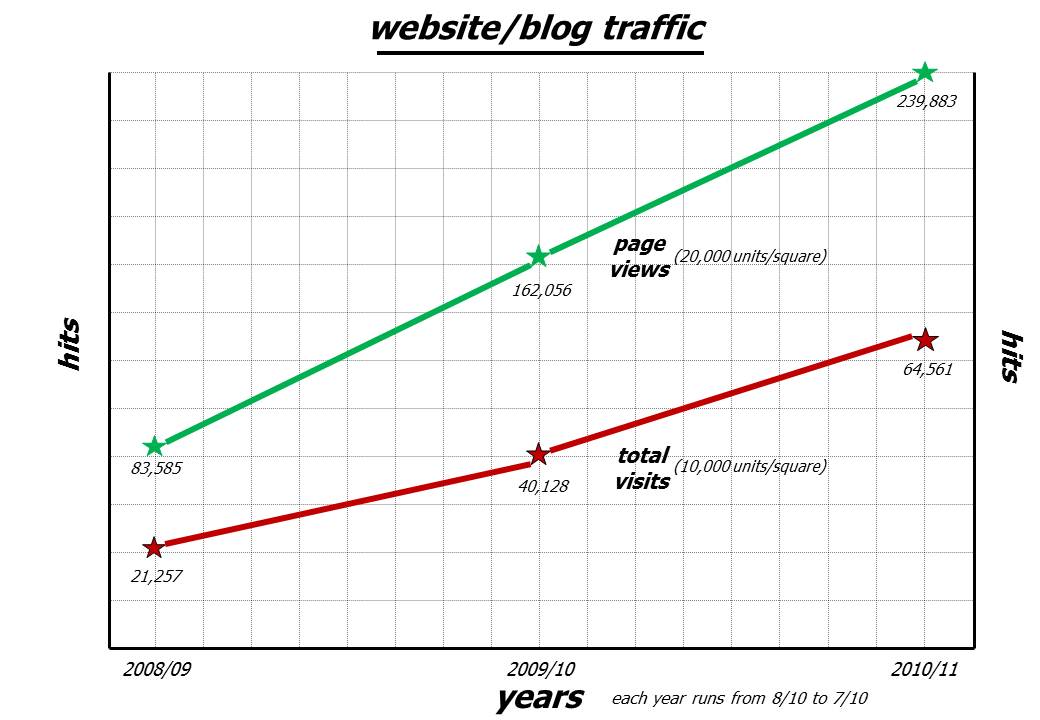Acceptance & commitment therapy (ACT): recent research & a better assessment measure, the AAQ-II
Last updated on 2nd April 2012

This blog went live on 8th October 2008. In the nearly three & a half years from then up until today, the blog & website (particularly the Good Knowledge section) have had 155,178 hits and 579,356 page views from 171 countries. The average visitor views about 4 pages on the site. The chart below illustrates the growth in traffic over the first three years (to 7th October 2011):

As I'd expect, most visitors come from the UK and, to some extent from the US:

I find the recent paper by Kraus & colleagues a bit scary - "Therapist effectiveness: Implications for accountability and patient care" - with its abstract reading "Significant therapist variability has been demonstrated in both psychotherapy outcomes and process (e.g., the working alliance). In an attempt to provide prevalence estimates of "effective" and "harmful" therapists, the outcomes of 6960 patients seen by 696 therapists in the context of naturalistic treatment were analyzed across multiple symptom and functioning domains. Therapists were defined based on whether their average client reliably improved, worsened, or neither improved nor worsened. Results varied by domain with the widespread pervasiveness of unclassifiable/ineffective and harmful therapists ranging from 33 to 65%.
A short 24-item version of the Five facet mindfulness questionnaire - the FFMQ-SF - is downloadable both as a Word doc and in PDF format.
I've already written a series of seven blog posts on this year's BABCP conference. What are the key points I want to take away? I think they centre around four areas. Most important for me is what's been triggered by Michael Lambert's presentation on "Supershrinks and pseudoshrinks" . Secondly, a major theme (more so than at any other conference I've been to) was couple therapy. I spent a lot of time listening to a whole series of couples experts - what do I want to do with this information now? Thirdly there are the implications from the Dodo bird panel on depression treatments. Lastly there's a bits and bobs category.
Taking these in reverse order:
(the "brief self-control scale" is downloadable as either a Word doc or a PDF file; the "grit scales", assessing ability to commit to longer term projects, are downloadable as PDF files; assessment of the broader quality of "conscientiousness" as part of the big five personality assessment is downloadable as a Word doc or PDF file, as too an additional "bac
I posted yesterday on the first, "Needs" section of the "Needs, beliefs, behaviours" diagram (below). Today I want to say a little about the second section of the diagram - "Beliefs".
This diagram is downloadable both as a Powerpoint slide and as a PDF file.